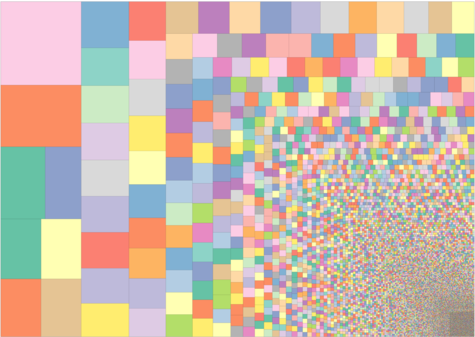oldWeather1&2 - Royal Navy logbooks from 1913-1923¶
Summary¶
The original oldWeather project ran between 2010 and 2012, and set out to transcribe the observations made by Royal Navy ships in the period 1913-1923. The documents being transcribed were Ship’s logs, from the ASDM53 collection of the National Archives (sample page image). oldWeather was the first large-scale citizen science data rescue project, it ran in partnership with Zooniverse.
oldWeather launched with about 250,000 page images to be transcribed (this phase is referred to as oldWeather1). Another 100,000 similar images were added after the first year (oldWeather2), giving a total of about 350,000 pages from 305 different ships. The progress of the project is well, if rather eccentrically, documented on the project blog.
oldWeather was extremely successful: More than 16,000 volunteers contributed, it produced around 7 million new weather observations (1.6 million records with a typical record including air temperature, wet-bulb temperaure, pressure, wind speed, wind direction, a present weather code and sometimes sea-temperature and sea-state). As well as the rescued weather observations, the project had a substantial history component, producing high-quality ship histories which are being adopted by the National Museum of the Royal Navy. Also it spun-up a very expert and engaged volunteer community, lots of press and public interest, prizes and awards, interdisciplinary collaborations, and it inspired other citizen-science transcription projects in many fields.
Costs and efficiency¶
The oldWeather website cost about £65,000 to set up (2018 £). The website running costs were borne by Zooniverse: These would have been substantial if the site had been run stand-alone, but were much reduced because many costs could be shared across Zooniverse’s whole stable of projects. In any event the running costs were not borne by the project, so they are ignored here.
The other major financial cost is project management: the project took probably about a quarter of one climate scientist’s time to support. Estimating their total cost (salary + overheads) at an arbitrary £70,000 per year gives a £35,000 management cost.
The 350,000 images each took around 2 minuutes to transcribe, and each was done three times - that’s about 35,000 person-hours of work, about 21 person years at typical full-time rate (200 days/year, 8 hours/day). All this work was done by the project volunteers.
The amount of volunteer work put into the project is much more than this, because the project has done much more than just transcribe the weather observations. A lot of effort has been put into history, community-building and project outreach, but this probably shouldn’t be counted as a transcription cost.
| Date run | 2010-2012 |
| observations rescued | 7,132,659 |
| Elapsed time (per ob.) | 2 years (0.15 minutes) |
| Financial cost (per ob.) | £100,000 (£0.014) |
| Effort required (per ob.) | 21 person-years (0.3 person minutes) |
Lessons learned¶
- Citizen science works. It is instructive to compare the costs and productivity of this project with the Royal Navy WW2 project, which was a very similar project but used professional transcribers. oldWeather does similarly well on all fronts except financial cost, which is much reduced.
- Good things about citizen science:
- It’s cheaper.
- It has great side outputs: public and press outreach, historical products, volunteer engagement, inspiring spin-off projects, …
- It’s no less accurate.
- Bad things about citizen science:
- It’s a lot of work to manage (the volunteers contributed a lot of management effort, as well as doing the transcriptions).
- It’s expensive in human effort.
- It isn’t any faster (maybe it could be, but we didn’t manage it).
- We could have got even more from the volunteers if we’d set up better systems for capturing their contributions. Volunteers made vital contributions to difficult problems such as observations quality checking & ship positions, but they did this in spite of the web interface, which was designed to allow them only to enter page transcriptions.
